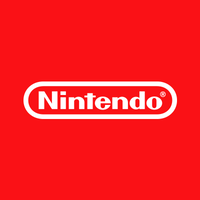One Billion Female Gamers: How the Demographics of Play are Shifting
by on 15th May 2019 in News


New research conducted by game analytics outfit Newzoo has revealed that today over 46% of gaming enthusiasts are women. That’s perhaps as many as one billion people.
While the sheer size of the audience offers plenty to be optimistic about, their current gender ratio shouldn’t come as a surprise. Many statistics over the past decade or so have pointed to a rise in the numbers of females playing games regularly. Thanks to an ongoing diversification of the types of games available – and the ways to access them – more people of every kind are now playing games, across the gender spectrum.
While it might still linger in popular culture, the never-that-accurate stereotype of the teenage boy with a furious devotion to big-budget console games as the near-entirely dominant gaming demographic is entirely out of date. That audience certainly exists, but today it is just one segment in a world where over two billion people globally play games. There are a lot of different types of gamer out there.
What is fascinating about the latest Newzoo research is how the gender divide across gaming relates to the different types of gaming audience there are. It would be naive to think there is one type of gamer for each gender. Instead, there are many different gaming demographics, each populated by people of every gender. According to Newzoo, it is the differences in how men and women consume games and gaming content within those distinct demographics that is most important to understanding your audience.
Broadly speaking, today there are many different ways to consume games, including means beyond playing them. With the rise of Twitch, YouTube and esports, today watching games, following players or teams and involvement in game-specific communities, are all ways people chose to devote time to the gaming hobby. That may be why Newzoo has defualted to calling people 'gaming enthusiasts'. As a result, there have been significant shifts in the core demographics that unpin the medium’s success today. That demographic jigsaw puzzle, of course, is the foundation on which advertising and marketing campaigns can be built, be they to promote a game, or to promote brands within a game.
Newzoo’s research uses its ‘Gamer Segmentation’ concept as a basis through which to understand the gender breakdown across games. Essentially, the analytics company has framed eight gamer ‘personas’; each of which represents a significant demographic within the global games playing audience. You can see those eight types right here.

“While there are almost as many female as male game enthusiasts, there are differences between the top personas for each gender,” writes Newzoo’s VP of research, Sander Bosman, introducing the findings. “Across all 30 markets researched, the top persona among female game enthusiasts is the Time Filler. These are people who play games, typically on mobile, to pass the time. Over a third of all female game enthusiasts fall within this group. Interestingly, the biggest gender differences can also be found here, with 36% of women fitting this persona versus just 19% of men. In fact, almost two-thirds of all Time Fillers are women.”
The gaming demographic with the second highest female populace is the ‘Cloud Gamer’, by Newzoo's metric. 17% of female gamers make up that group, as do around 20% of male gamers, meaning it is the demographic the most common for men. These types of player favour free-to-play, discounted titles and minimal hardware spend. As such, they are perhaps the primary group targeted by the coming streaming platforms like Google Stadia, where technologically demanding games can be accessed through the likes of smartphones and smart TVs.
And demonstrating the make-up of the game and esports spectator audience, 14% of female enthusiasts fit into the ‘Popcorn Gamers’ demographic; those who tend to watch more gaming content than play titles themselves. As Bosman points out, these consumers, “might be easier reached through mediums like Twitch and YouTube than with in-game advertising.”

As the gaming consumer population grows and evolves, understanding these audiences will be key to those involved in in-game advertising, ad tech and game marketing.
Of course, Newzoo’s take offers only one perspective on the demographic divisions that define game consumption, and this article alone does not offer a complete guide to every audience. But the data here does provide fascinating fodder for those keen to have some kind of lens through which to understand the tastes, interests and habits of over two billion people with a shared enthusiasm.
Expect more on gaming demographics from TheGamingEconomy in the coming weeks.
Ad TechAdvertisingAnalyticsAudienceDataesportsGamingPlayersStreamingUncategorizedVideo







Follow TheGamingEconomy